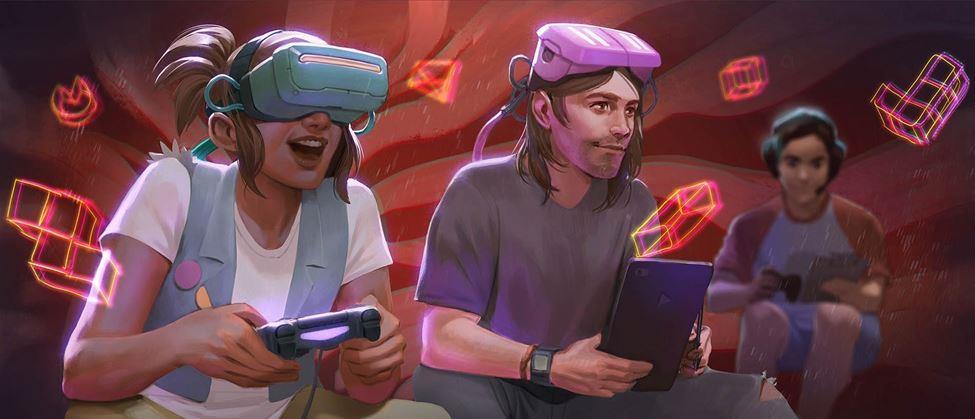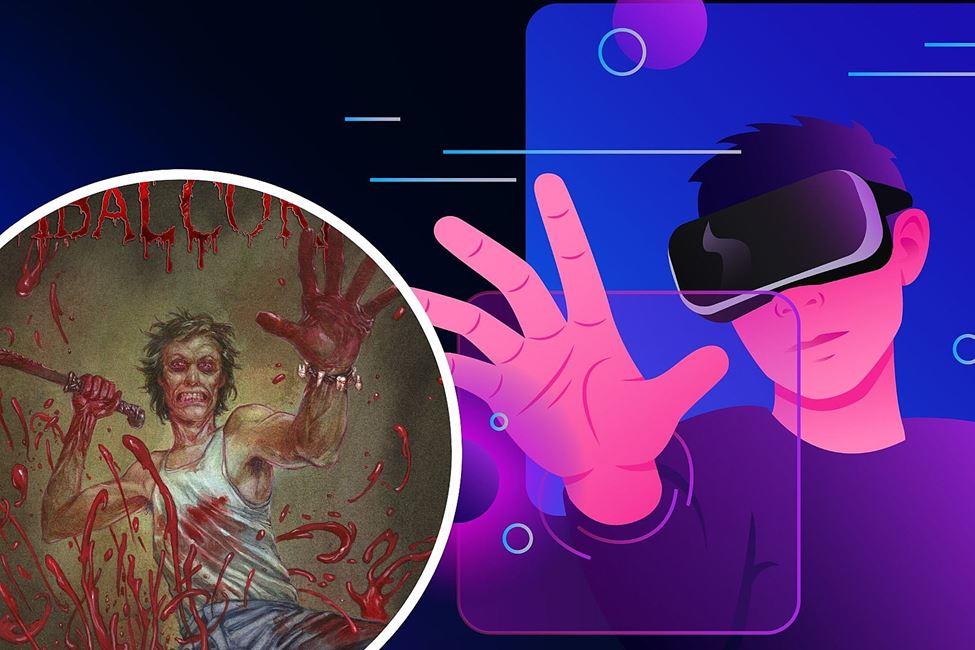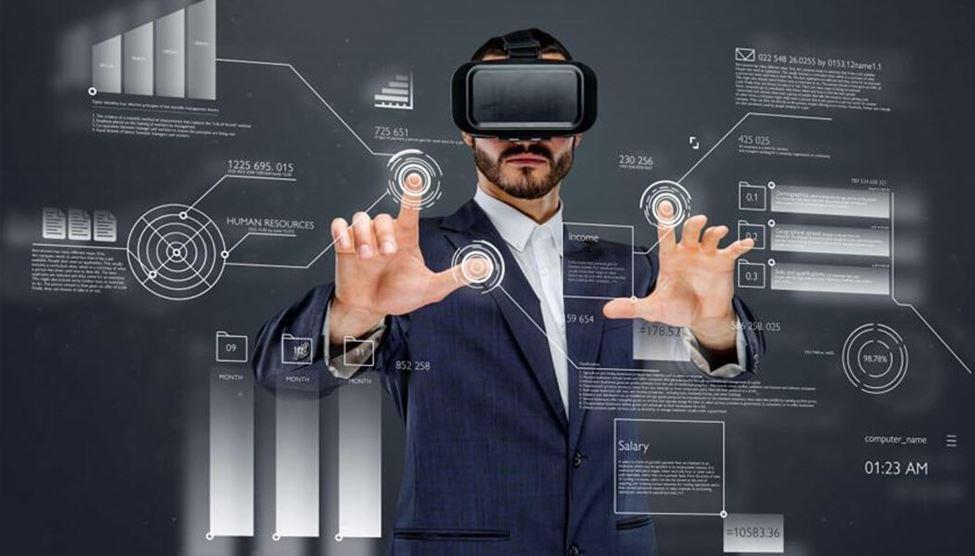
Have you ever wanted to enter a fantasy world to explore it as if it was real? For a long time, this was nothing but a dream for gamers. However, with rapid technological advancements, virtual reality (VR) has brought this dream to life. VR game development has opened up new possibilities for game developers, creating immersive and interactive gaming experiences that were previously unimaginable. This blog post will dive deep into the new age of virtual reality game development, exploring its evolution, impact, and future.
Table of Contents
Evolution of VR Game Development
Virtual reality game development has come a long way in a short time. The first VR headsets were introduced in the 1990s, but they were bulky, expensive, and had limited capabilities. It wasn’t until the early 2010s that VR technology started to make significant progress. The Oculus Rift, released in 2012, was the first headset to capture the attention of the mainstream gaming industry.
Since then, VR technology has rapidly improved, with companies like HTC, Samsung, and PlayStation releasing their VR headsets. The rise of mobile gaming has also fueled the growth of VR gaming. With the development of mobile VR headsets, such as Google Cardboard and Samsung Gear VR, VR gaming has become more accessible.
Impact of VR Game Development
VR game development has had a profound impact on the gaming industry. It has created new opportunities for game developers to create immersive and interactive experiences that were previously impossible. VR games can transport players to new worlds, allowing them to explore and interact with their surroundings in ways that traditional gaming cannot replicate.
The impact of VR gaming is reflected in the industry’s growth. The VR gaming market is projected to be worth $45.09 billion by 2027, with a CAGR of 30.2% from 2024 to 2027. The increasing adoption of VR technology drives this growth, the rise of mobile VR gaming, and the demand for more immersive gaming experiences.
Key Features of VR Game Development
Immersive Environments
One of the key features of VR game development is the ability to create immersive environments that transport players to new and exciting worlds. With cutting-edge technologies like 360-degree cameras, motion capture, and haptic feedback systems, game developers can design virtual environments that offer an immersive experience that comes close to replicating the real world.
Realistic Interactions
Another important feature of VR game development is the ability to create realistic interactions between players and the virtual world. This can include everything from picking up and manipulating objects to interacting with other players and non-playable characters.
Spatial Audio
Spatial audio is a feature of VR game development that creates a realistic and immersive audio experience for players. With spatial audio, players can hear sounds from specific locations within the virtual environment, making the experience feel even more real.
Hand Tracking
Hand-tracking technology allows players to use their hands to interact with the virtual world. With hand tracking, players can perform complex actions such as grabbing, throwing, and catching objects, making the VR experience even more immersive.
Challenges in VR Game Development
High Development Costs
One of the main challenges of VR game development is the high development costs. Developing a high-quality VR game requires specialized hardware and software, which can be expensive. Additionally, creating immersive and interactive environments requires significant time and resources.
Technical Limitations
Another challenge of VR game development is the technical limitations of the technology. For example, current VR headsets have limited resolution and field of view, which can impact the overall experience. Additionally, there are limitations regarding how much processing power and memory is available for VR games, which can limit the complexity of the virtual world.
Motion Sickness
Motion sickness is a common problem for many VR users, especially during fast-paced action sequences. This can be a challenge for VR game developers, who need to balance the desire for immersive gameplay with the need to avoid causing discomfort for the player.
Future of VR Game Development
Increasing Adoption
Increasing technology adoption is one of the biggest drivers of the future of VR game development. As more people become familiar with VR and invest in VR hardware, there will be a growing demand for high-quality VR games.
Cross-Platform Compatibility
Another trend in the future of VR game development is cross-platform compatibility. As VR technology becomes more mainstream, developers increasingly focus on making their games compatible with multiple VR platforms, allowing players to experience VR games on various devices.
Improved Graphics and Performance
We can expect VR games with even better graphics and performance as hardware and software improvements. This will allow for more complex and immersive environments and faster and more responsive gameplay.
New Genres of VR Games
As developers continue experimenting with VR technology, we can expect to see new genres of VR games, such as educational and social VR games. These games will take advantage of the unique capabilities of VR technology to create new and exciting gaming experiences.
Virtual Reality Esports
As VR gaming becomes more mainstream, we can expect to see the rise of virtual reality esports, with tournaments and competitions taking place in virtual reality. This will create new opportunities for players, fans, and developers and help establish VR gaming as a legitimate form of competitive gaming.
The Importance of Storytelling in VR Game Development

One of the key features of successful VR games is the ability to tell engaging and immersive stories. VR game developers have a unique opportunity to create experiences that transport players to new worlds and allow them to explore and interact with richly detailed environments. To do this effectively, developers must create compelling characters, dialogue, and plotlines that keep players engaged and emotionally invested in the game.
In addition to traditional storytelling techniques, many VR game developers are experimenting with new interactive narrative forms. This includes branching storylines that allow players to make choices that affect the game’s outcome and dynamic narratives that can adapt and change based on the player’s actions and decisions.
The Importance of User Testing in VR Game Development

User testing is a critical part of the VR game development process, as it allows developers to gather feedback from players and identify areas for improvement. This can include everything from identifying bugs and performance issues to getting feedback on gameplay mechanics, user interfaces, and overall game design.
To conduct effective user testing, developers should recruit a diverse group of testers, including experienced VR gamers and those new to the technology. They should also provide clear instructions and guidance on how to play the game and collect feedback through surveys, interviews, and observation.
By incorporating user feedback into the development process, developers can ensure that their games are optimized for the best possible player experience and can avoid common pitfalls such as poor performance, confusing interfaces, and frustrating gameplay mechanics.
The Role of Artificial Intelligence (AI) in VR Game Development

The role of Artificial Intelligence (AI) is increasingly becoming critical for VR game developers. AI can aid in creating more realistic and immersive virtual environments, enhance gameplay mechanics, and elevate the player experience. For instance, AI algorithms can generate realistic character movements and behaviors and create procedural content such as terrain and environments.
AI can also create more engaging and challenging gameplay mechanics, such as advanced enemy AI that can learn and adapt to the player’s strategies and playstyle. Additionally, AI-powered tools can optimize game performance and reduce development time by automating bug detection and code optimization tasks.
The Ethics of VR Game Development

As the field of VR game development evolves, developers need to contemplate the ethical considerations surrounding their work. This includes issues such as player safety, privacy, and the potential impact of violent or disturbing content on vulnerable players.
To address these issues, many VR game developers are incorporating safety features such as motion sickness reduction techniques and creating clear guidelines and warnings for potentially distressing content. Some developers are also exploring new approaches to game design that prioritize player well-being and social responsibility, such as developing games that promote empathy and understanding.
Ultimately, the success of VR game development will depend not only on technical skill and innovation but also on the ability of developers to create games that are engaging and responsible and that reflect the values and priorities of players and society as a whole.
The Role of VR in the Future of Gaming
VR is already significantly impacting the gaming industry, but its potential applications extend far beyond just gaming. As the technology continues to evolve, we can expect to see VR used in a variety of new and innovative ways, such as:
- Education and training: VR can be used to create immersive training environments for industries such as healthcare, engineering, and the military, as well as to provide interactive educational experiences for students.
- Social and communication: VR can create virtual meeting spaces, social environments, and multiplayer games that allow players to connect and interact in new and exciting ways.
- Art and entertainment: VR can create immersive art installations, virtual concerts and performances, and other forms of interactive entertainment that blur the line between reality and fantasy.
Overall, the future of VR gaming and development is full of potential and possibility and promises to be one of the gaming industry’s most exciting and dynamic areas. By staying up-to-date on the latest trends and technologies, working closely with hardware and software partners, and focusing on creating engaging and innovative experiences, developers can help shape the future of gaming for years to come.
Monetizing VR Games: Business Models and Strategies
As the VR game development industry grows, developers are exploring various business models and monetization strategies to generate revenue from their games. Some popular models include:
- Selling games at a fixed price: This is the traditional model for game sales, where players pay a one-time fee to purchase the game.
- Subscription-based models: In this model, players pay a recurring fee to access a library of games or features.
- Freemium models: This involves offering a free-to-play game version with optional in-app purchases or other monetization features.
- Advertising-based models: In this model, the game is free to play, but revenue is generated through in-game advertising or sponsorships.
Developers may also use a combination of these models or experiment with new approaches such as crowdfunding or early access releases.
Balancing Realism and Fantasy in VR Game Development

One of the unique aspects of VR game development is the ability to create immersive, realistic environments that allow players to feel as though they are truly inside the game world. However, a fine line exists between realism and fantasy, as overly realistic environments can sometimes be overwhelming or unsettling for players.
Many VR game developers are exploring new ways to balance realism and fantasy to address this challenge. This can involve incorporating elements of fantasy or stylization into realistic environments, using lighting and color to create a more visually pleasing experience, and incorporating gameplay mechanics that encourage players to engage with the game world in new and interesting ways.
Ultimately, finding the right balance between realism and fantasy in VR game development will depend on various factors, including the target audience, the game’s genre and setting, and the overall goals and vision of the development team.
The Business of VR Game Development

In addition to the technical and creative challenges of VR game development, there are also various business considerations to consider. This can include issues such as funding, marketing, distribution, and navigating the complex landscape of hardware and software partners.
To thrive in VR game development, developers must tackle these challenges by forging robust partnerships with hardware and software vendors, devising effective marketing strategies to connect with their target audience, and staying updated with the latest industry trends and technologies.
Overall, the business of VR game development can be complex and challenging, but with the right approach and mindset, developers can create successful and engaging games that capture the imagination of players around the world.
Final Thoughts
In conclusion, VR game development is a thrilling and rapidly developing field with boundless potential for innovation and creativity. By embracing the key features of VR technology, overcoming the challenges that arise along the way, and embracing new business strategies and approaches, developers can create engaging, immersive, and memorable gaming experiences that transport players to entirely new worlds. Whether you are a seasoned veteran in game development or a novice entering the industry, there is no better time than now to delve into the world of VR game development and make your wildest gaming fantasies come true. So why wait? Take the leap into the new age of virtual reality game development today!
Syed Sameem Rizvi is a seasoned technical author with experience across various niches, including VR game development. He has worked for esteemed companies like 5StarDesigners and is known for his expertise in producing engaging and informative content.